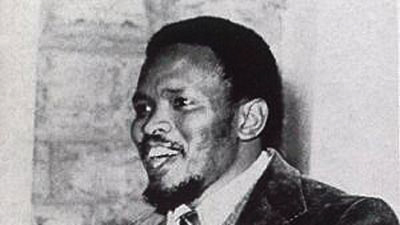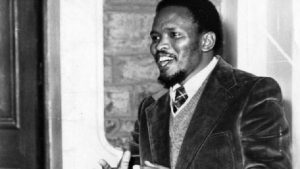This year marks the 43rd anniversary of the death of the Black Consciousness Movement leader, Steve Biko. Decades later, his ideas still resonate with millions across the globe. Biko’s arrest and death on 12 September 1977 sparked a huge outcry.
A month later, Black Wednesday happened. Eight organisations linked to the Black Consciousness Movement and three newspapers were banned by the apartheid government, a move to silence critics and hide the truth.
Legacy
Steve Biko’s legacy is well preserved, especially in Ginsberg, near King Williamstown in the Eastern Cape. This is where you will find his home and the Steve Biko Legacy Centre.
Shortly before his death, Biko was detained at the Walmer Police Station in Port Elizabeth. The cell is currently being developed as a heritage site. The room in the Sanlam Building in the Port Elizabeth CBD where he was questioned and tortured, is also deemed significant, but for now, lacking attention.
Founder of Ezigcanjini African Heritage organisation, Simphiwe Msiziare says the building is of significant importance and should be preserved.
“The 6th floor and room 619 is actually the heritage because Steve Biko was tortured in the room. So, a lot happened on that floor and now it will be difficult to tell the public that they cannot access that floor and room. So, if such things could be put on the table with the relevant departments, we can assist one another and all of these concerns raised would not be there.”
American human rights activist Rev. Al Sharpton delivered the Steve Biko memorial lecture this year:
Activist and teacher, George Botha, was also killed by security police in the Sanlam Building in Port Elizabeth. The wife of the late Botha, Pralene, says it still stands as a brutal reminder.
“The fact that it happened cannot be wished away. The scars of the past are still there and they hurt to this day for many of those who were directly involved and affected by what happened.”
The Sanlam Building has been converted into social housing units, a development that does not sit well with people, who were detained on the 6th floor.
“Well, I feel very uncomfortable about it and I argued many years ago that at least the 6th floor of the building should be preserved as a memorial and also as some form of human rights centre where people receive an education. I think whether or not people receive justice and in many cases, they did not, there should be a remembrance in a way in which people can learn from the past. It is really important in South Africa that we remember the torture and the evils of detention without trial of which there is a restriction on in our constitution,” says former detainee, Professor Janet Cherry.
Attempts to solicit comment from the Qhama Housing Institute, responsible for the re-development of the building, were unsuccessful.






